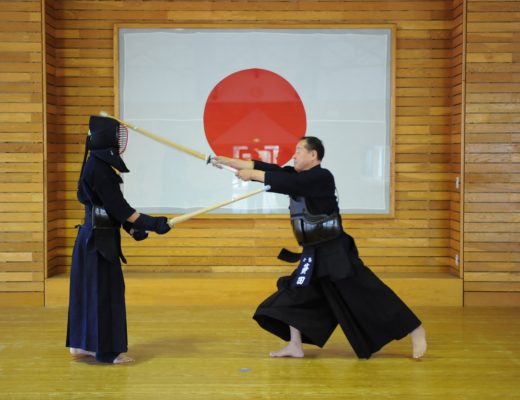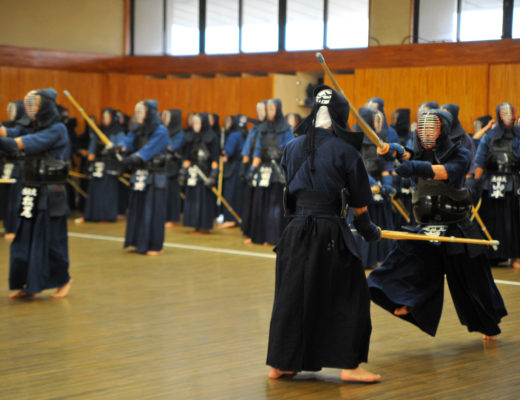2020.7 KENDOJIDAI
Good news for those Kendo practitioners who have been struggling with stiffness in their body, back, legs and shoulders. Uenoyama Yasuyuki, the director of Bear Hug, a leading company in the relaxation business, uses his experience as a Kendo player to teach you how to stretch and massage the two major joints of the body: the shoulder and the hip joints. Your Kendo improvement will get a new impulse with these techniques.
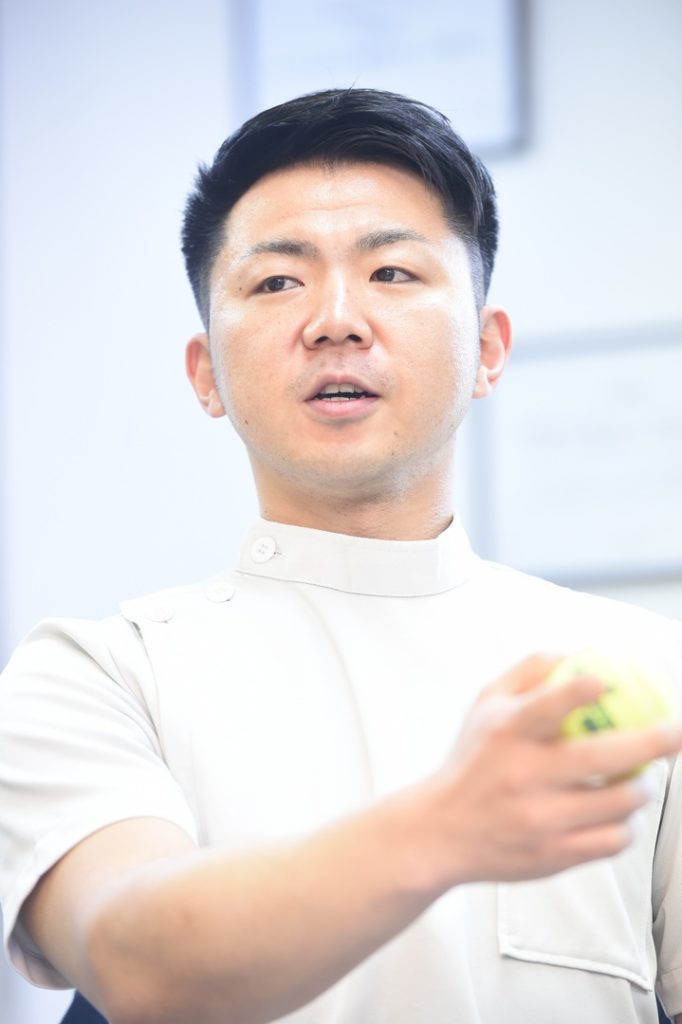
Uenoyama Yasuyuki
36 years old, born in Wakayama Prefecture in 1983. After graduating from Wakayama Higashi High School, he joined Bear Hug Inc. Ltd. and made it to top 8 at the All Japan Businessmen’s Tournament. He is currently the director of Bear Hug Inc. and coach of the Kendo Club, as well as the president and lecturer of Tokyo Sports Trainer Academy.
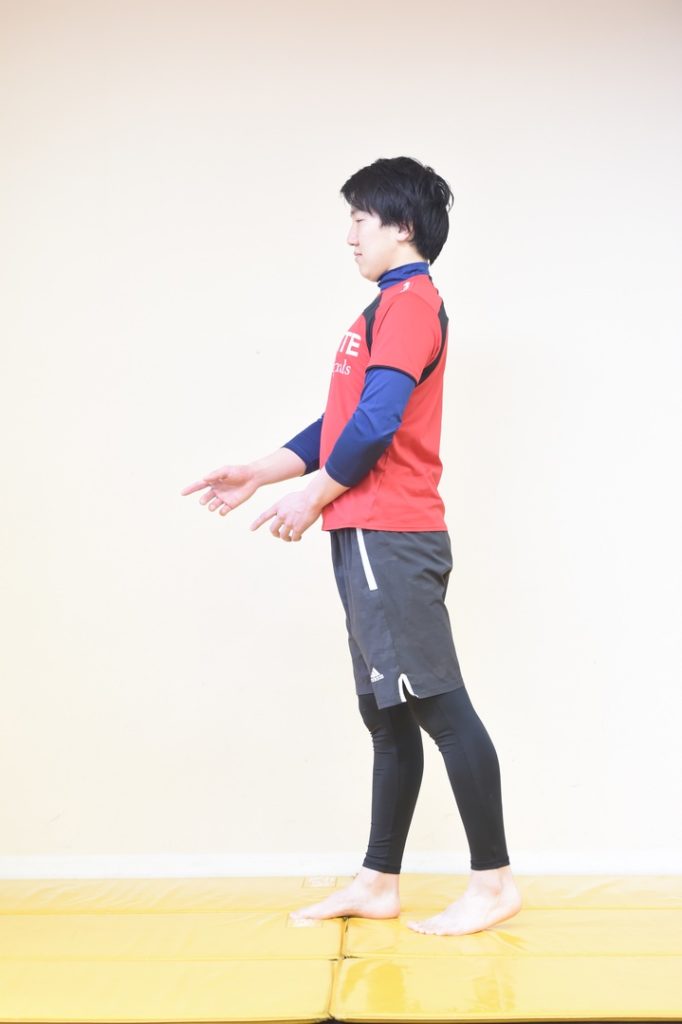
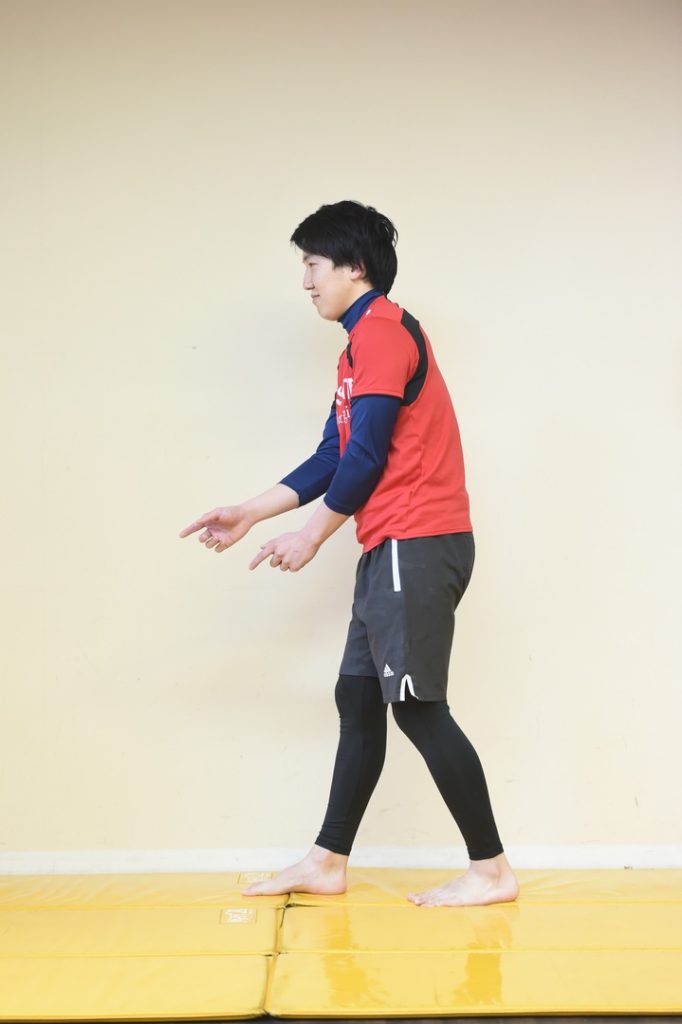
In the photo below, the muscles necessary for Kendo have become weak or stiff, the range of motion has decreased and the Kamae has become “smaller” compared to the one in the photo above
In order to maintain proper posture and correct Kamae, it is important to take care of it through physical training, daily stretching and massage
In general, Kendo Keiko tends to involve a lot of warm-up, but they tend to neglect the cool-down period after, and since it is difficult for adult Kendoka to do Keiko, they tend to move their bodies less often. In fact, it is very common for working Kenshi to come to our clinic and find out that their bodies are very stiff. As a result, many of them seem to have accumulated fatigue, which can cause injuries.
Conversely, if you can relax your body by stretching and other exercises to counteract this accumulation of fatigue, you will not get injured as easily and your overall performance will improve. Self-care alone can greatly reduce the risk of major injuries, such as ruptured Achilles tendons.
I myself will be 37 years old this year, and I’m getting injured often. Since I am studying my body and trying various things to improve my Kendo, I feel that as I rely less on physical strength, I’ve started recovering from my injuries and my posture and Suburi style have improved as well.
Our bodies have about 260 joints, and the two biggest ones are the hip and shoulder joints. When these two joints become immobile due to injury or stiffness, the movement range of the entire body decreases. In this article, we will introduce stretching, massage and physical training to help you maintain mobility in these two joints. I hope you will try these exercises as they are easy for anyone to follow.
As for the massage, you can use a tennis ball to ease the tension. I also do this and I recommend it as it will dramatically improve your workout. What I will introduce in this article is care for physical problems that are common among Kendo practitioners. If you need fine-tuned care, please come to Bear Hug. We will take care of you.
Easy! Massage with a tennis ball
- perform 2 or 3 sets of 1 minute each for every exercise
Loosening up the plantar fascia
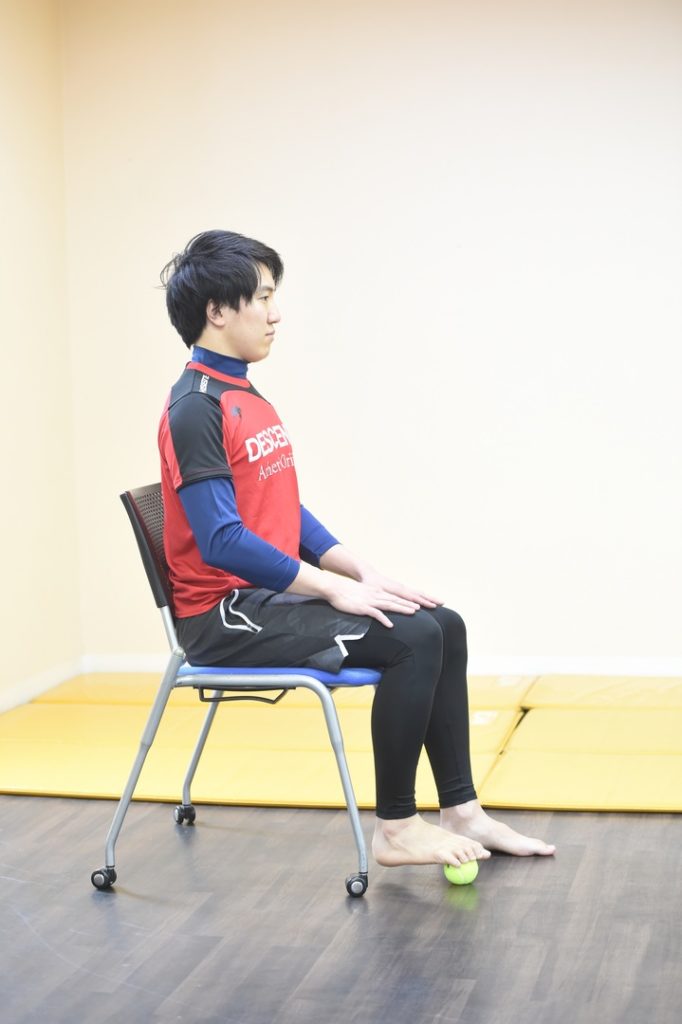
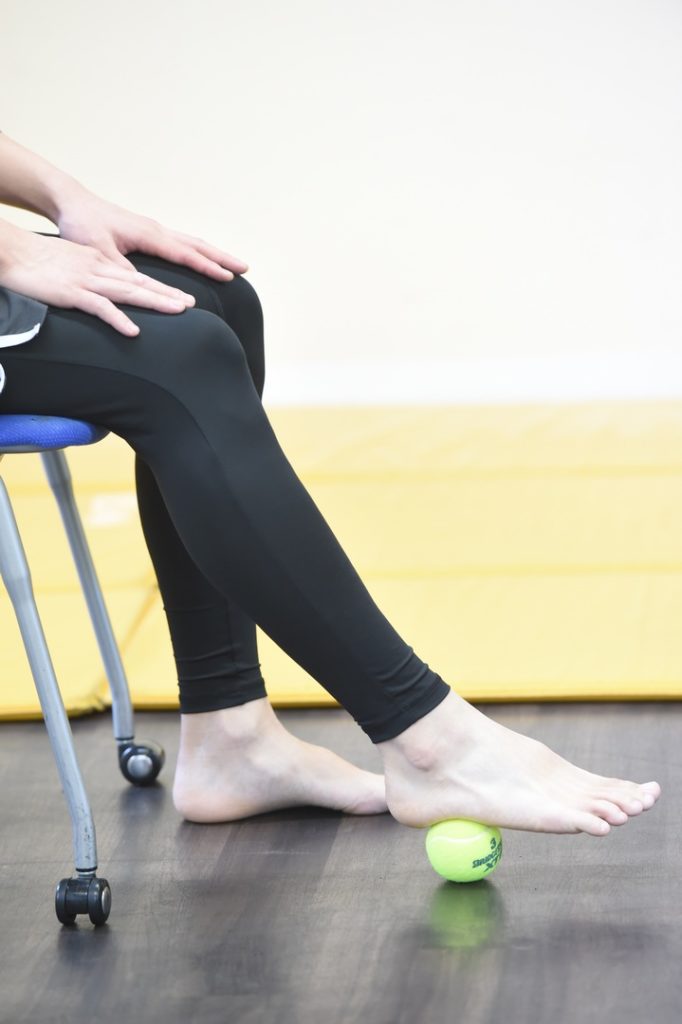
The muscles are covered by a thin membrane called fascia. In Kendo, you put more pressure on the plantar fascia than you would by walking, so it is a place where inflammation is likely to occur
A tennis ball (or any hard ball) is useful to release the tension in this area. Sit in a chair with an upright posture and roll it around with your feet. The tension will be removed and the flexibility of your arch will return. It is recommended to do this at the beginning of a stretching session as it will also soften the calves
Loosening up from hamstrings to calves
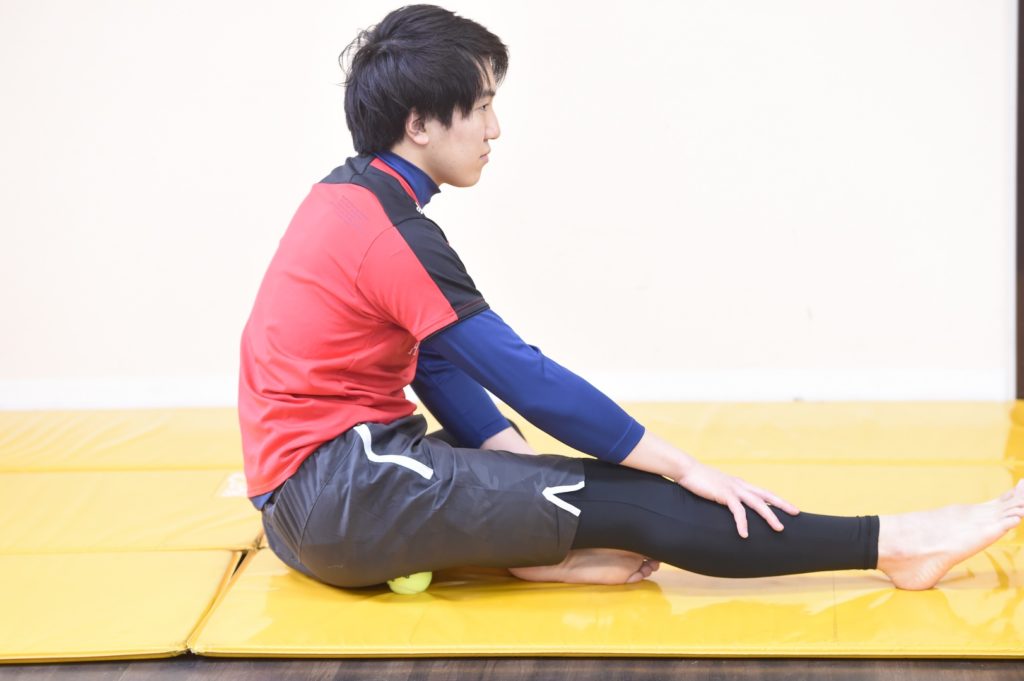
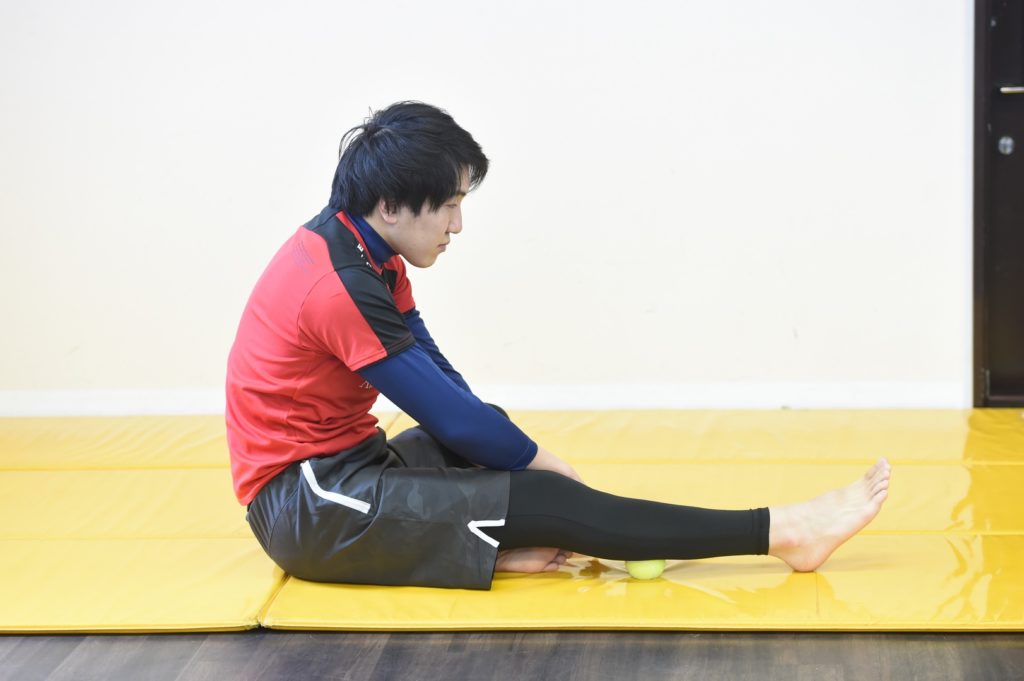
The muscles from the hamstrings to the calf, which play an important role in the footwork and Fumikomi in Kendo, are also important. Massaging these can also be done with a tennis ball. In the case of the plantar fascia, you rolled the ball around. In this case, you sit down with your feet thrown out in front of you on the floor, place the ball on a “painful spot” and hold it still
Adjust the area that works for you. If you don’t feel pain anywhere, you can roll the ball along the muscle fibres. This releases the back of the thighs, which helps prevent Achilles tendon rupture and separation
The rest of this article is only available for Kendo Jidai International subscribers!




